November is when we anglers really start to get excited and get out and about. The season is marching ever closer and the number of fish that start to liven up are on the increase and there are lots of species that come back into the picture.
The weather has finally started to play the game with daylight hours stretching out to around 14 and, when the sun is out, the temperature is peaking to an average of 19ºC. We all know that when things start to warm up, whether it’s the water temperature or just in general, the fish start to come on hard!
Stripped trumpeter are back on the list. They have had a closed season over September and October while they spawned. Anglers looking to target them do well with 3 hook heavy-duty bottom rigs with some quality bait.
I am a huge fan of fresh squid as bait. It stays on the hook really well, which is important if you are getting some pesky gurnard bites. Fresh gurnard strips are also great bait, but be careful with them as if you get spiked you will not be happy! Look for these fish on reef sections from 50-150m and make sure you have a play with your sounder as you search for them. A well-sorted sounder will be a massive weapon in your arsenal to first locate and then keep on a nice patch of stripy ground.
You will know if you have found a patch of striped trumpeter because they are not shy at gulping down your wonderfully presented bait and heading for home. They put up a good tussle and if you are using multiple hook rigs, 3 at a time is not uncommon.
If on a search mission, a large soft plastic like Berkley’s new Gulp 6.5 Nemesis on the top hook banging away can work to good effect. These are an Australian design and have a big ribbon tail that attracts a lot of attention.
Big news for November for a lot of Tasmanians is cray season. Crayfish have been closed for males and females for some months and the annual November pilgrimage is a favourite weekend for a number of Tasmania families. It does pay to check the DPIPWE website as there have been changes to opening times across the Western and Eastern areas.
Snorkelling and diving are very popular ways to find a few crayfish for the pot. Those that are not keen to get wet can pot or the good old-fashioned cray ring.
Ringing for cray is a great way to get fine fare to the dining table. Growing up it was a fabulous way to spend time with friends and family. You can combine a bit of cray ringing with some rock spinning while you wait. The key is to find some suitable shoreline and set up camp. Like rock fishing you have to be very aware of what the sea conditions are like. Little back waters and holes in behind big rocks sheltered from the prevailing swell is a good start.
The best way to find a good spot is not to think about it too much. Crayfish are basically underwater spiders and you know how spiders get in everywhere! Crayfish will be backed up and squeezed into places you won’t even imagine. Just like a spider coming out for a fly so too will a crayfish, if you put the bait out under its nose.
A cray ring is simply a piece of round mild steel bar bent into a hoop with a net attached. There is some rope attached in such a manner that allows the pulling of the ring back in quickly without spilling the craw daddies out. The name of the game is to bait your ring with some fish heads or the like and toss it into your hidey-hole. The ring will sink to the bottom and the bait will do its thing. It is now a waiting game. The bait smell will be permeating the water down there and hopefully the crayfish will smell it and come looking for it.
If you have another rod you can have a cast or if you have taken the kids explore the shoreline and rock pools. Come back a little time later and pull the ring in quickly. All things going well you will have some crayfish in the net section or tangled in the netting itself. It is a great way to spend some time with friends and family on one of the best places in the world – the Tasmanian coastline.
Get in and see Harry at The Boat Shack in Devonport for all the info you need about ringing for crayfish
The more adventurous can try their luck at diving and try and find where they are all hanging out. Diving for crayfish is an enjoyable pastime but it also needs to be paid the respect it deserves. We are land living and air breathing animals and as such need to pay attention and follow any instruction to the letter.
Free swimming underwater with all the right gear, well serviced, is one of life’s wonderful sensations. The feeling of weightlessness and the surroundings are nothing short of amazing. Locating areas that crayfish frequent and live comes with time and experience. It is always a good idea to go diving with a friend. In most cases it’s about safety, but if your mate is a good diver and can recognise good ground and locate crayfish you can learn from them as well. Remember you need a licence for potting, ringing and diving for crayfish in Tasmania.
Early November has some good insect hatches dependent of course on the prevailing conditions. Hatches will progress throughout and the mayfly and caddis species should be well and truly hatched by the end of November. The word from experts in the flyfishing domain also recommend keeping an eye out for early terrestrial beetle falls.
The gum beetle is a dome-shaped critter that is often said to look like giant ladybirds. That’s a big call as they are twice the size and never as bright or covered in spots. Their actual colour varies widely with most being a yellowish or greyish green. They live in the eucalypt trees and on warm days decide going for a fly about is a great idea. Good news for trout is that many lose their compass and end up in the drink.
Lake surfaces littered with DUI beetle’s will stimulate spectacular summertime rises. My limited experience of fishing a lake littered with beetles is that it is very tough going and I expect this is what excites the ardent fly fisho! November is often favoured amongst flyfishers looking to fish classic style dry fly presentations.
The lakes are all firing and the highlands are alive with people and good weather. Boating on the highland lakes in November is a delight and trolling around or bouncing a soft plastic in the sunshine is a fabulous way to spend a day.
Low water levels can expose timber so concentrate plastics in and around those areas.
The sea run trout fishing will start to slow towards the end of November so get out and make sure you get amongst them while they are still around. There have been some stonkers caught late October.
Traditionally November would be seen as too early to try for a mako shark. The thing is that the seasons are in some sort of upheaval and tradition has gone out the window. Example of this was the incredibly late run of albacore and bluefin tuna we experienced recently in Tasmania.
Mako sharks will arrive in good numbers mid-December, however those who want to try their hand in November may get a surprise.
There are massive numbers of couta in Bass Strait, as well as big schools of salmon. Mako sharks are big apex predators that eat and swim. The bigger the mako the more it needs to eat. These big schools of baitfish will be of interest to big mako sharks that have been around a while. If you are keen to have a go make sure you put a good plan together and have plenty of berley. Set yourselves for a 6-8 hour session as there may not be heaps about, but what will be of quality size.
If you are trying off Bass Strait don’t get too hung up over trying to find any great depth. People tend to drive over a lot of mako sharks looking for 70m+ in Bass Strait. If you have found a patch of baitfish in 30m and your drift is heading north, that is as good a start as any.
The Strait does not have the bottom features of our other coastlines and as such is a bit of a raffle. There will be people that will tell you spot X is the go or spot Y, but given the featureless bottom 50m deep off Wynyard or Sisters Beach is a good starting point. It is not a huge trip out for smaller boats and when you get there you have the chance of coming across some nice flathead while you wait.
When you come across a large mako be mindful of catch and release as the bigger ones are normally the breeding females. If you are harvesting one for the table make sure you have played the fish out well and dispatch it quickly and cleanly. Mako sharks must be approached with care and think a little bit before setting a gaff. Have the deck of the boat clear and anything that can be put away stowed neatly. Lay your tail rope out ready (or the second gaff) so they are easy to put to hand, but not in the way. I say this as when you introduce the gaff to the mako – it’s about to get large.
The Game Fishing Club of Northern Tasmania is going to have some club forum nights where everyone is welcome, not just club members. There will be a great night of fun and education and if there is ever a species where a few tips and suggestions are worth their weight in gold, it’s mako fishing. Find them on Facebook.
The sun and the weather on the improve really brings our waterways alive, it is a great time of the year. The better weather allows all the family to come out and enjoy what fishing and boating has to offer. Trips with kids is always interesting in the boat, but just because it is tricky doesn’t mean it has to be a non-event.
The clever angler will realise that if you can get the kids along for a fish it doubles the amount of fishing you can get done over the season.
Kids love to be involved. If you give them a job to do, however little or insignificant to you, they will love it. Helping Dad and being part of the action will bring a smile and a sense of self-worth to any son or daughter. Grunting and expecting them to know what you want done without saying will be a recipe for disaster. Take some time to explain any task given and for what reason. They need to know ‘why’, so tell them. This takes time and some effort on your part but it bears fruit in the long run.
Often explaining to kids the consequences should something not go as planned is a good idea as well. If I want my four kids to listen and make sure they do as they are told, I normally finish with “…because if you don’t, a policemen will come along and lock Dad away and then who is going to get tea?”
When you launch your boat watch your son or daughter bristle with pride after they have successfully held the rope while you park the car. Teach them simple knots they can tie and untie at the wharf. Talk to them about which side of the pontoon to have the boat on in any given tide. They are little information sponges and they love soaking it all in to tell mum and their mates at school on Monday.
Like with any fishing trip, preparation is the key. We can put up with things as adults because we make conscious decisions. When you decide to take kids out with you make sure you have packed to keep them comfortable. The biggest issue you will face when fishing with kids is a bad case of the “I am…hungry…thirsty…cold…[and of course the classic]…bored”.
If you can plan and address these inevitable claims you are on a winner. Pack some lunch and include a treat they would not normally have (can also be used as a bribe). Make sure you have a good supply of freshwater and some warm clothing. Games are a good idea, so is colouring in, but be warned that boating, having your head down may bring them unstuck seasick wise.
That leads me to another point. Don’t break the kid’s first trip out in 2m of confused swell berleying. If they get seasick first trip it is a hard road back so walk them up to any conditions that may trigger motion sickness by first outings on flat calm lakes.
Reads: 4744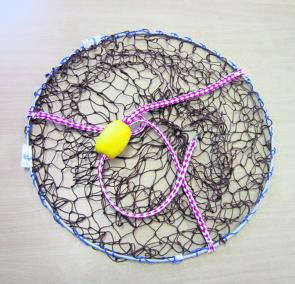
Ringing for crayfish is a great way to get some fine fare to the dining table.
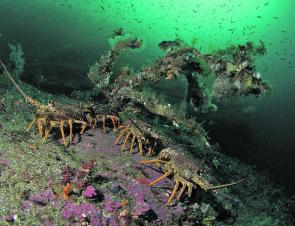
The best way to find a good spot is not to think about it too much – crayfish are like spiders and get in everywhere!

Remember you need a licence for potting, ringing and diving for crayfish in Tasmania.
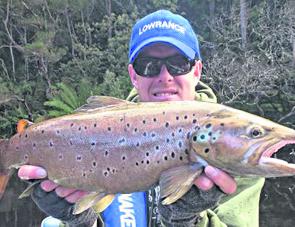
Matthew Howard put the time in and found some excellent trout. They will start to slow down at the end of November so make the most of the now.
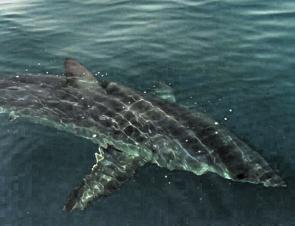
Mako sharks will arrive in good numbers mid-December, but those who want to try their hand in November may get a nice surprise.

Get the kids involved and out on the water this summer. Zalee Fraser loves going out with Dad for a fish.
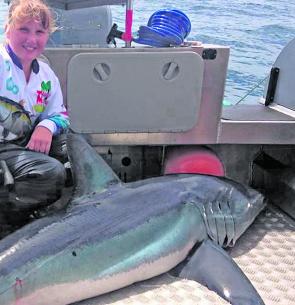
Chloe Hammersley just sat her boat licence at 13 years old! Expect big things from this lady!




